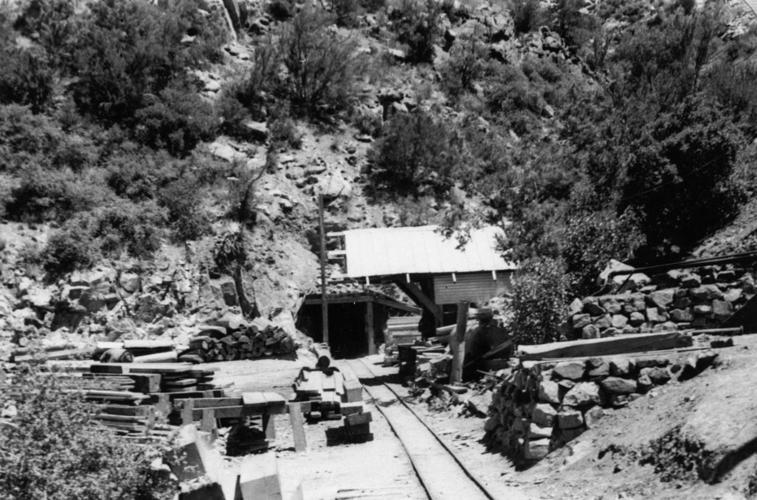Early mining operations in the Hualapai Mining district included the Copper World Mine, comprised of country rock including mica, gneiss, schist and granite.
The mine itself is located on the west flank of the Hualapai Mountains about 18 miles east of Yucca, California. The town is the nearest shipping point along the main line of the Atchison, Topeka and Santa Fe Railroad and U.S. Highway 66.
Kingman served as the supply hub for the local mining operations. Primary ore minerals include chalcopyrite and sphalerite with a copper and zinc metal content of the ore being a 1-to-3 ratio.
Throughout the 20th century, multiple companies and individuals had a stake in the mine.
The first report and assay maps of the mine were assembled by W. Tovote in 1916. He reported the initial ore shoot to be short with the vein in depth evolving from copper to predominately zinc.
Ore was shipped by the Southwestern Leasing Co. from the site by burros. Fifty tons of ore running 10 percent copper and 15 percent zinc recorded at the mine dump.
J.L. White visited the property in 1918, noting an outcrop of copper carbonates measuring 250 feet in length and averaging 20 feet wide. The outcrop consisted of shallow tunnels and open cuts.
The presence of wollastonite, an industrial mineral comprised of calcium, silicon and oxygen, and a good indicator of mineralization, led to the mine site’s original discovery.
In its early years, the Copper World Mine was owned by Phelps Dodge Corp.
It was leased to Dye and Bathwick, local mine owners from Kingman, in 1942 through 1946. The 190-and-250-foot levels were successfully mined producing 13,990 tons of crude copper and zinc ore which was shipped to custom mills including the Shattuck-Denn in Bisbee.
Working under a government loan, the mine was one of the few in Arizona to make a 100 percent return on profit. A 75-ton flotation plant was built on-site after the mine operators reached the massive sulfide ore deposit at a 500 foot depth.
Allison Steel Co. also had an interest in the mine, having leased it during the early 1950s. However, it relinquished its interest after a decline in zinc prices.
By 1959 the mine produced 35,000 tons, averaging 3 percent copper and 8 percent zinc. The greatest production of copper and zinc ore came from a section of the Copper World Vein measuring 400 feet in length by 450 feet vertical extent.
In 1963, the Bobcat Mining Co. claimed a total production valued at $347,260 from their mining activity at the Copper World Mine.
The company’s 75-ton flotation mill had operational difficulties based on the lack of water in the area. Further complications involved a 1963 report that downplayed the company’s potential of producing notable quantities of copper and zinc-bearing ores, and recommending that the company clear its title and any indebtedness regarding the mine then owned by the University of Arizona.
The Standard Copper Co. leased the property from the UA in 1966 and rehabilitated both the mine and mill.
Extensive exploration was undertaken involving diamond drilling, crosscutting, drifting and raising. Zinc concentrates were processed and shipped to New Jersey Zinc, in Bartlesville, Oklahoma. Copper concentrates were shipped to Douglas. The onsite flotation mill was increased to 150 tons along with a 4-and-a-half foot by 6-foot rod mill.
Water shortages and declining ore grades forced the mine to close by 1968.
Steve E. Tima of Tima Oil & Mining Co. acquired the mine in 1974. Tima worked toward enticing investors to put money into his mine stating that the Copper World Mine contained a minable deposit of 1.7 million tons of ore, averaging 4.75 percent copper and up to 10 percent zinc. He also recommended production involving open-pit mining along with the heap leach SX-EW production of copper.
Tima later claimed reports made by the U.S. Government, Newmont Exploration and Standard Metals supported the mine’s potential of yielding up to 1,489,924 tons of ore including secondary metals such as platinum, silver and gold.





